Between the blackthorn and gorse headges, in a small open patch exposed to the sun, I found this Common Lizzard. Stretching its long body out of the undergrowth it appeared to welcome the mid day sunshine. Absorbing heat it flattened its scaly body against the humid grass and leaves, occasionally turning more of its body out of the dappled shade to eventually bask in the full sunshine.
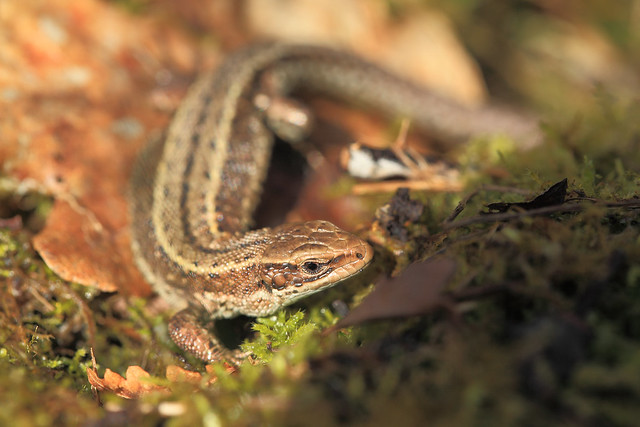
The highlight of Friday’s conservation work session was spotting this Common Lizzard coming out of the undergrowth in order to warm itself up in the early morning sun.
I suspect this Common Lizard was coming out of hibernation. For a cold-tolerant lizard that can survive north of the Arctic Circle, when the first signs of Spring emerge, there’s no time to waste sleeping. Basking is important because the lizard’s body temperature is regulated by the temperature of its surroundings: the warmer its blood, the more active it will become and so better able to hunt and prey or evade predators. It has a preponderance for eating spiders and insects while to survive it must evade predators such as snakes and buzzards.
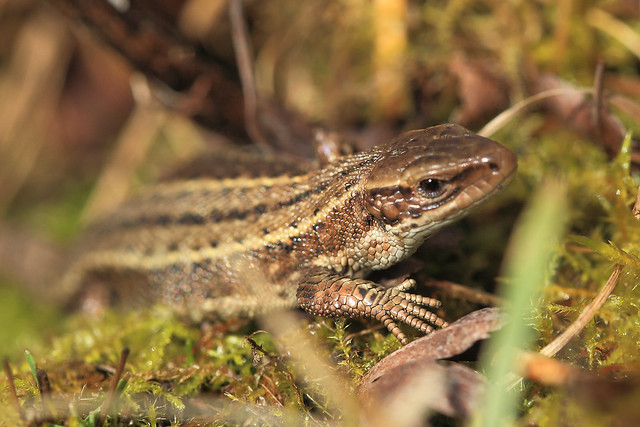
The lizard appeared pretty sluggish so I suspect that it may well have been coming out of winter hibernation to welcome the first signs of an early Spring.
The need to thermoregulate – to control body temperature – means that the largest numbers occur where they can find sunny basking spots, plenty of prey, and cover to hide in. They like heaths and moors, quarries and sheltered cliffs, open woods and rough ground – which can include undisturbed places in town, such as railway clearings. There are reports of Common Lizards appearing in local gardens, but they usually turn out to be newts, which can look remarkably lizard-like when they leave their breeding ponds and develop a silky feel to their skins. Unlike newts, which are amphibians, lizards have scales and sharp claws and are much less common as garden residents.
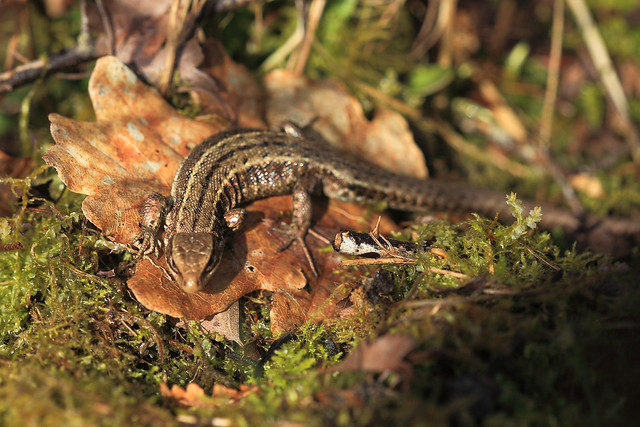
The need to thermoregulate – to control body temperature – means that sunny basking spots are favoured resting places.
Common is not the best adjective for these lizards, though, because they avoid farmland and most built-up areas and are declining in many places. They are only one of the two lizards to be found in Wales, the other being the slow warm (a legless lizard with a very smooth, shiny appearance). They don’t travel far from their colony and once a population has been wiped out by development, there’s little chance of lizards re-colonising from more than a few hundred metres away.
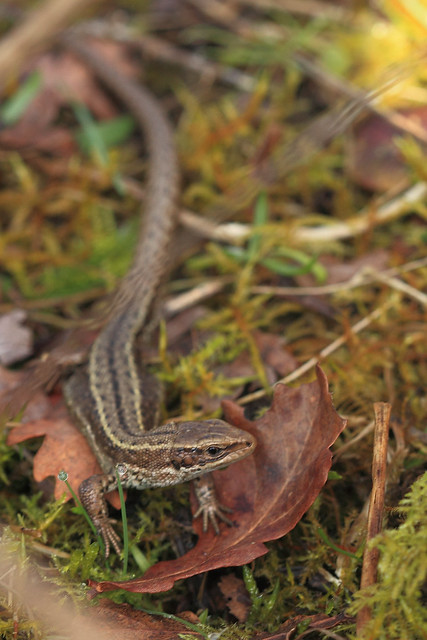
When adult, both sexes are similar in appearance, usually brown tan above, often with thin, lighter pale brown dorso-lateral lines, and with darker flanks.
Gestation takes place not within the protection of a hard egg casing (as is most often the case with lizards) but within a soft membrane that ruptures immediately at birth. The newborn lizards are black, good for absorbing heat, but as the grow their bodies become rich mahogany with a dark tail. When adult, both sexes are similar in appearance, usually brown tan above, often with thin, lighter pale brown dorso-lateral lines, and with darker flanks. Males are typically patterned with lines of fine black and white flecks, slightly darker flanks and an orange underside. Females generally have a pale back with dark markings and a dark vertebral line, contrasting dark flanks and a yellow underside. Females are noticeably fatter than males particularly when the are pregnant. The head of the male is slightly broader than the female. When intact, the tail is long with a rough appearance, though many individuals have a tail that has been lost and has re-grown shorter and darker.
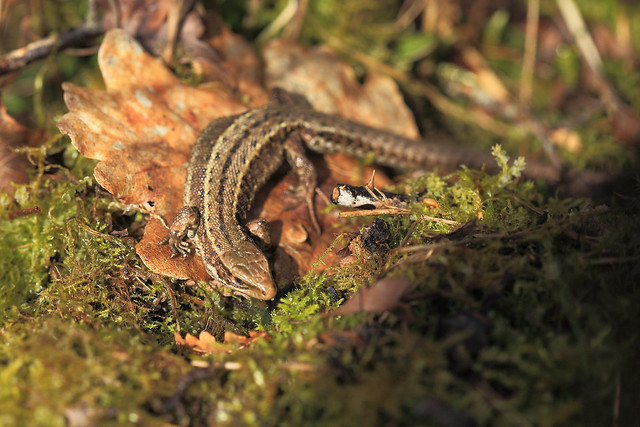
Female showing the typical darker flanks, dark vertebral line and narrow head.
This particular specimen was in perfect condition with its long, meandering tale indicating that it had been lucky so far not to have it bitten off by some hungry predator. I also felt lucky to have spotted this wonderful and not so common lizard. One usually associates harbingers of Spring with butterflies – for me it has to be the Orange Tip butterfly. So it was refreshing, at least for this year, to have a lizard be the first creature to welcome the Spring and what better day for this than the 1stMarch, St David’s Day!
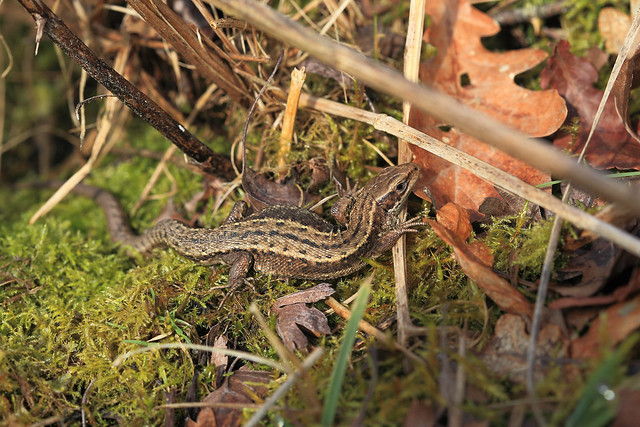

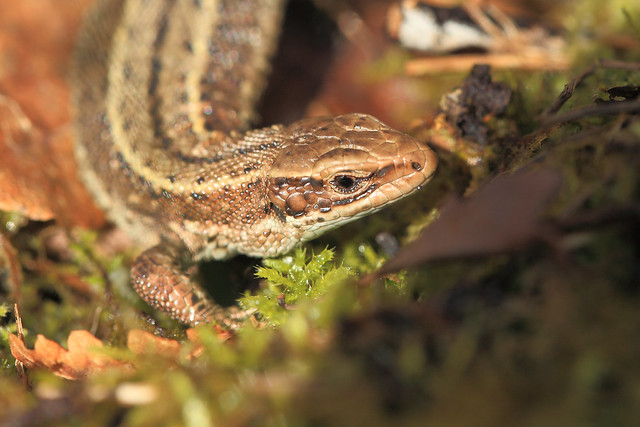
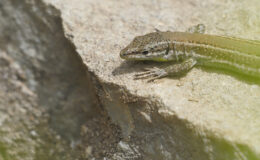
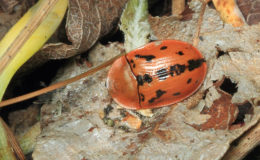
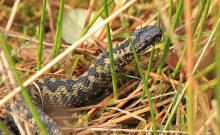
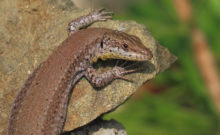
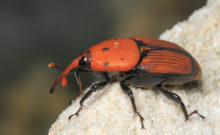
Leave a Comment